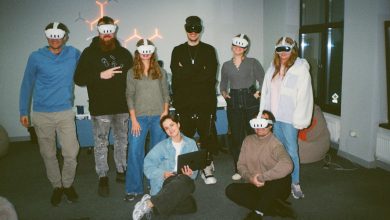If there is a single thing that drastically changed the construction and architecture industry, it’s undoubtedly Building Information Modeling (BIM). Simultaneously a new movement in construction and software for architects and engineers, BIM has increased efficiency, streamlined collaboration, and provided unique solutions for various problems. Thanks to it, the whole construction process is quicker and smoother.
But could it all be taken to an even higher level? With new technologies, the construction industry has the potential to change even further and become more efficient. AI seems particularly promising, especially since it can naturally synchronize with BIM. In fact, we can already imagine three ways in which AI could improve workflow efficiency when used together with BIM.
1. AI Could Help With Design
One thing machines are good at is following rules, and AI should be no exception. In fact, it should be able to understand and execute all kinds of instructions and commands, no matter how complex. That alone opens up a whole new world of possibilities.
For example, instead of designing standard rooms and dealing with repetitive work, architects can leave such mundane tasks to AI. AI won’t only successfully complete all assignments, but will also do it in less time. That significantly reduces designers’ workload and improves the overall workflow.
On top of that, when given a design, AI could analyze it and find discrepancies and clashes the designer missed. Thanks to that, mistakes would be caught on time and corrected before they cause real damage. AI could also suggest alternative solutions, thus saving the designer’s time.
And finally, AI could even be creative. If given a large enough database of various models to analyze, it could generate a brand new design based on the analysis. Of course, an architect or a designer would have to check and approve the design, as well as make potential changes. But the whole designing process would still be much quicker.
2. AI Would Make Collaboration Easier
The architecture and construction industries already have fantastic collaborative tools, such as BIM Collaborate Pro. Thanks to these programs, whole teams work together more easily than ever. But AI should take collaboration to a whole new level, allowing dozens of professionals to work as one.
BIM technologies already allow everyone working on a single project to access the same models and documentation and make necessary adjustments. Then, all other team members can see the changes and respond to them accordingly. That eliminates the need for meetings, emails, and phone calls.
With AI, even manual changes might not always be necessary. As soon as one team member updates something on the shared model, AI could respond by adjusting all other affected aspects. It would also notify other team members of the changes, allowing them to stay up to date.
In the final design, all parameters would be so perfectly synced and adjusted that one would think a single person worked on everything. It would be hard to imagine a team could be working together so well without a single error!
3. AI Could Control Budget and Scheduling
Cost and time management always present a particular problem to those in charge. It’s difficult to determine exactly how big of a budget should be set aside for each project and how long it’s likely to take. Because of that, budget overruns and deadline delays are rather frequent in the construction industry.
But while humans may struggle with such estimates, machines certainly don’t. Even now, far simpler computers than AI can make fairly accurate time estimates. Thus, it’s safe to assume that advanced machines of the future won’t have trouble with it either.
So, AI could take over budget control, scheduling, and task coordination. If given enough information on previous similar projects, its predictions should be rather accurate. At first, of course, a person would have to check and make adjustments when necessary. But as the machine learns, it will get better at its job until it finally reaches the stage where it won’t need any human intervention.
In Conclusion
AI may still be in its infancy, but its potential is immense. It’s already easy to see how it could affect and change various industries, streamline collaboration, and increase workflow efficiency. On top of that, AI is likely to drastically reduce human error, thus improving general safety and eliminating delays in project completion.
And as it happens, the construction and architecture industries offer a particularly fertile ground for AI to take roots. Designers, architects, and construction managers are already using various digital tools to help them in their day-to-day activities. AI would be yet another tool in the box — though far more efficient.
Ultimately, adding AI to BIM would be revolutionary in many ways. It could potentially change the way the construction industry operates, reducing costs, improving speed and efficiency, and promoting creativity. And that’s only our current limit. When AI finally comes, who knows what other possibilities it may unlock?




